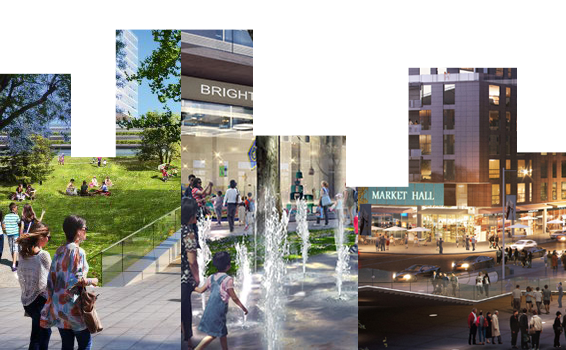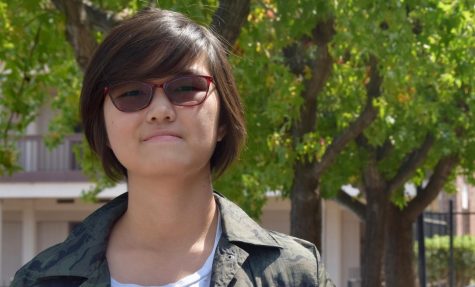End of an Era
Cupertino City Council approves new Vallco revitalization plan

October 26, 2018
On Sept. 19, the Cupertino City Council voted 3-2 to approve Sand Hill Property Co. (SHPC)’s Tier 2 Specific Plan to renovate the now-dead Vallco Mall. It will include 1,750,000 square feet of office space, as well as over 2,500 apartments and less than four percent retail space. The mockups displayed on revitalizevallco.com and architect firm Rafael Vinoly Architects’ websites show a futuristic town center that includes a sleek AMC Theater, upscale dining and greenspace that spans for acres. The plan replaces a previous proposal for Vallco renovation, called The Hills at Vallco.
The City of Cupertino’s website, envisionvallco.org, states that a specific plan is just that: a plan for how a certain area will be used. It is a document that details objective standards for multiple aspects of land development, such as the buildings that will be erected on the land, how certain land will be used and how the site itself will be laid out.
According to an archived version of revitalizevallco.com from August, the City of Cupertino became involved in a General Plan Update between 2012 and 2014. During this time, the proposal first surfaced to transform Vallco from its current state as a declining mall to a town center that would include office space, retail and housing. Years later, in 2016, the political action committee Better Cupertino submitted a ballot initiative that would secure Vallco as a retail-only site, which, if passed, would have disabled SHPC from further investing in Vallco. Both that measure and the measure supporting SHPC’s investment in Vallco were rejected by Cupertino voters in 2016’s election season.
City Council member Savita Vaidhyanathan voted to approve the plan for two reasons: to transform the dead mall into a mixed-use destination that will serve Cupertino for many generations, and because she believes that the Specific Plan will provide for teachers, first responders, medical service professionals and the disabled in order to cultivate an inclusive community within Cupertino.
Vaidhyanathan is also on the VTA Board of Directors along with leaders from four other West Valley cities, and says that the mass transit system that the Vallco Specific Plan has will encourage people to move away from using single-occupancy vehicles, which she says will help the environment in the long run.
“I want to leave the planet a better place for the next generation and save our environment by reducing greenhouse gas emissions,” Vaidhyanathan said.
However, junior Maya Tate, who was once involved in the Vallco redevelopment process along with the rest of her organization, High School Democrats of America, says that SHPC did not implement enough public transport infrastructure to ensure that pedestrians and bikers would be safe. As a result, HSDA unanimously voted to back out of the Vallco redevelopment process.
“A lot of us bike and walk, and we felt that the way [SHPC] had developed Main Street was really unsafe and pedestrian unfriendly,” Tate said. “And so we just backed out because we felt like the community’s concerns are not being addressed.”
SHPC, on the other hand, says on its website that it has made an effort to engage with the Cupertino community. It says that the Specific Plan will reflect the community’s needs.
“We are prepared to engage with the City and the community about the types of public improvements and community benefits that can be incorporated throughout the process, as we have done consistently over the past several years,” SHPC said on revitalizevallco.com. “It is important to note the Vallco Town Center project application is informed by years of community engagement on the future of Vallco. We are confident it will be successful and are proud to bring it forward for our community.”
On the other hand, Better Cupertino supporter and Cupertino City Council candidate Liang Chao has fought against this new plan, along with the rest of the political action committee. Chao contends that SHPC refused to honor Better Cupertino’s demands for reduced office space and below-market-rate (BMR) housing, which is housing that is rented or bought for a price below market. She also believes that SHPC found loopholes within the California state law SB 35 in order to allow them to pursue their project without sufficient BMR housing. SB 35 requires developers to submit projects to the California state legislature, the Office of Planning and Research and the Department of Housing and Community Development in order to be approved through a streamlined process. The Tier 2 Specific Plan and the SB 35 project were developed concurrently, and SHPC stated that they did not intend for the SB 35 application process to interfere with the development of the Tier 2 Specific Plan.
As a result of the Tier 2 Specific Plan getting approved, Better Cupertino has begun petitioning for a referendum on the new Vallco plan, pushing instead for the project that would be approved by SB 35. In comparison to the Tier 2 Specific Plan, the SB 35 plan would have buildings reach up to 240 feet, have no required community benefits and have no extremely low income housing units that accommodate the developmentally disabled. The campaigning prompted revitalizevallco.com to delete several tabs on the website (which included a Specific Plan Process, FAQ and several mockups of the finished project) and instead emblazon a message on the front page that implores Cupertino residents to “Get the facts for yourself before signing anything.”
“[SHPC] has been able to play around with the numbers so that an affordable housing project in fact has much, much more office space than the amount of housing they provide,” Chao said. “So that’s the SB 35 project they have, and then using that as a threat, they derailed the entire community-driven process this year.”
Vaidhyanathan, however, sees no community benefits in the SB 35 plan. According to her, SB 35 would be handled entirely by the state with no input from Cupertino citizens or the City Council. Additionally, Vaidhyanathan says, while the SB 35 plan provides more affordable housing overall, it does not include moderate income housing, which would benefit teachers who fall in that category. The existing Tier 2 plan has housing that ranges from very low to moderate income.
“A referendum, if it qualifies, will reduce the benefits to our school districts, shuttles, bike paths and trails,” Vaidhyanathan said. “SB 35 has no community engagement and SB 35 does not come to the City Council for approval. There will be no community benefits. The City Council cannot impress upon the developer regarding the community needs.”
Chao also believes that the City Council itself fell short of its duty to its citizens multiple times regarding the renovation. By allowing SHPC to essentially bypass state law, she says, the Council is allowing “bad” development to take place within the city so that it becomes completely different from the relatively quiet, suburban Cupertino that she is familiar with. She says that if she saw Cupertino moving into the direction of encouraging bad development, she would move out entirely.
“[The City Council has] set a really bad precedent for the future of Cupertino,” Chao said. “If [developers] think Cupertino is lenient, the developers will push hard for something that’s going to turn Cupertino into something none of us could recognize.”
In contrast to Chao, Vaidhyanathan believes that the new Vallco will bring life to the Cupertino community, pushing it into the future as the “city of Apple.” She sees Vallco as a central part of Cupertino’s culture, and foresees it becoming a key destination for generations to come.
“This is how I see it: I took a bold stance to vote for something for our future generations,” Vaidhyanathan said. “We are the city of Apple, and we are encouraged to ‘Think Different.’ This will be a legacy project for the whole community to enjoy.”

















